I know I have thrown away a lot of cornmeal in my young and dumb years. I have wasted a lot! But the cornmeal I have thrown out was never due to expiry dates, it was always because of mealworms.
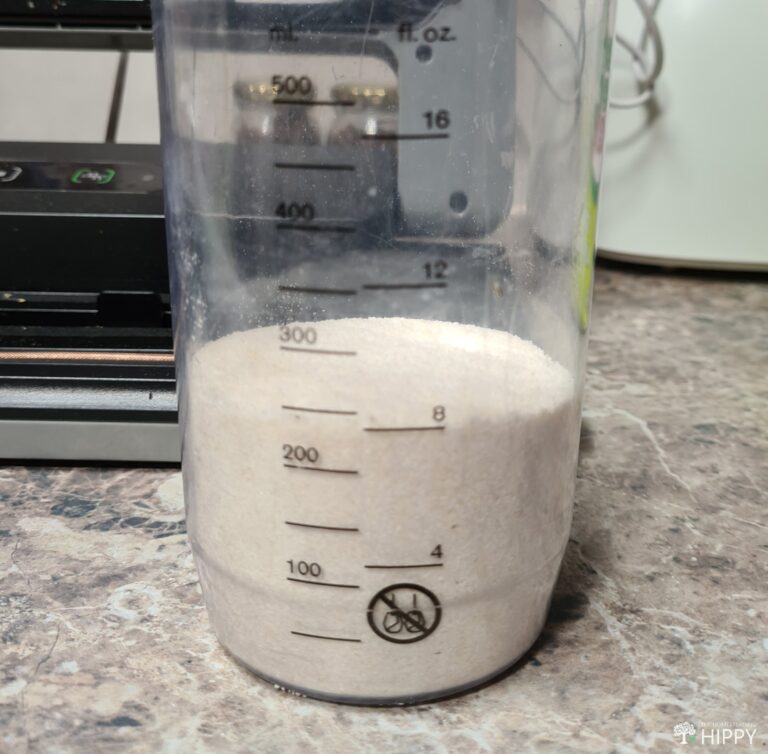
If stored in the correct conditions, your cornmeal can stay fresh for more than 10 years! Yes, you read right, more than a decade!
To store cornmeal properly, you need to understand the conditions that affect the freshness of cornmeal. This means exposure to oxygen, temperature, packaging, and light.
In South Africa, we call Cornmeal Mieliemeel. It is sadly the only food many of our poor people have, as it is cheap and very filling.
Afrikaans people make it chunky with their braai (barbeque) with a gravy of tomatoes and onions, many South Africans eat cornmeal in stiff chunks (often left over from the braai the previous night) or smooth with sugar and milk for breakfast.
We use it as a coating for fried foods like chicken or fish, and it is often an ingredient in savory baked goods.
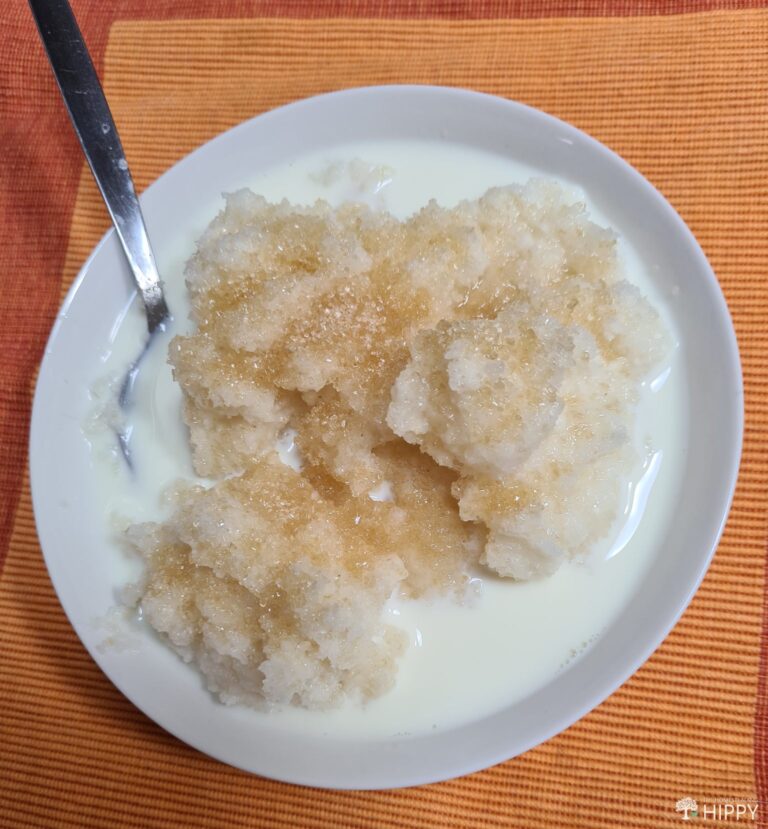
In most countries, cornmeal is served as a smooth, light-textured porridge.
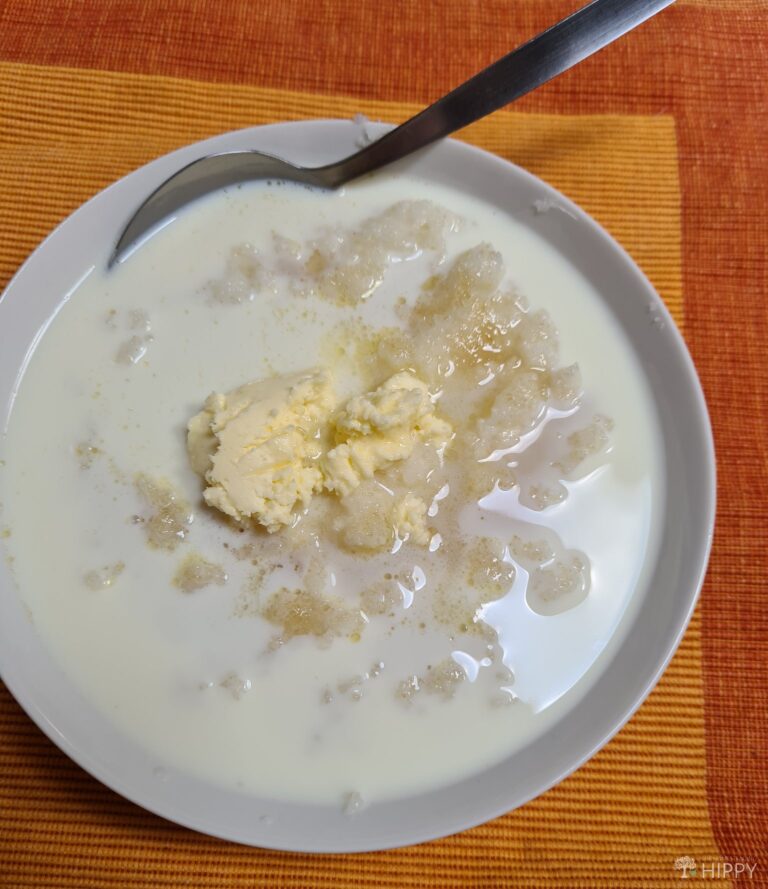
Our brand names vary from Mieliemeel (Afrikaans) to Iwisa or Umbila (Zulu) to Umgubo Womona (Xhosa) to Poone (South Sotho) – now I have added to your South African vocabulary. If you are Irish, you will know it as Min Choirce – now you know. ?
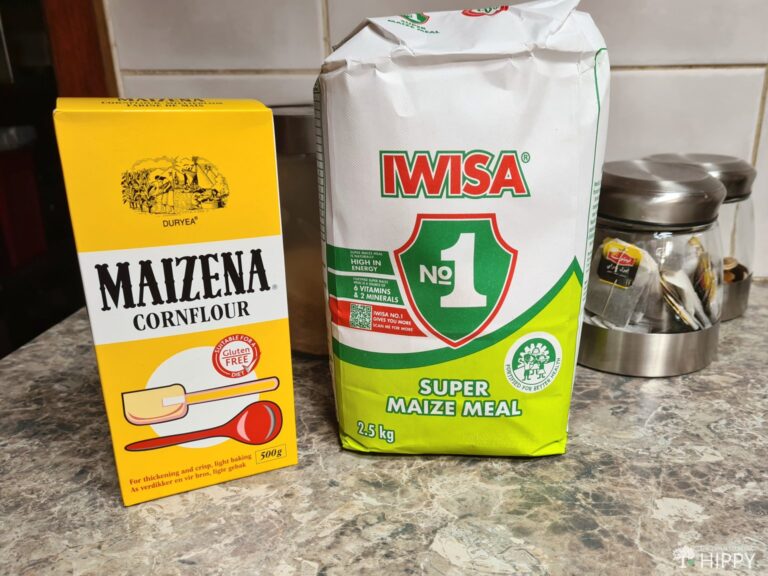
Cornmeal is much coarser than cornflower, this means that cornmeal has had less exposure to light and oxygen, therefore giving it a longer shelf life.
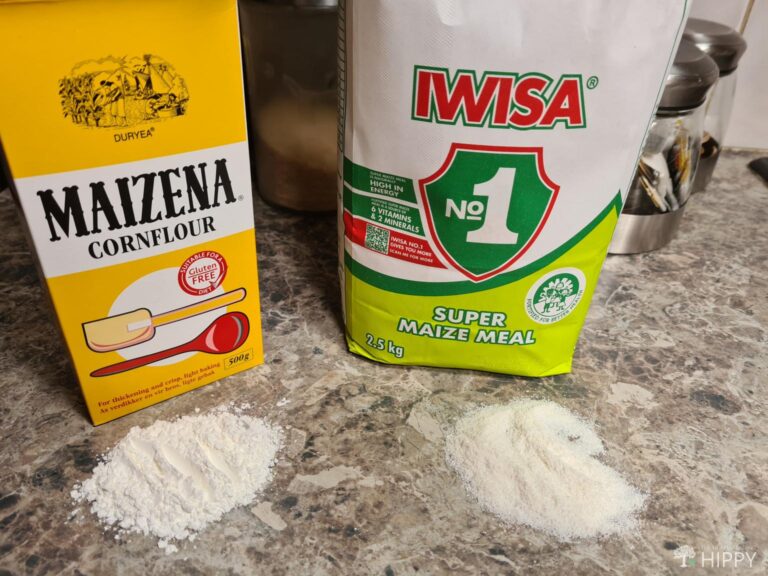
Without further delay, let us start with the conditions your cornmeal will like and what it will not like.
What is the Shelf Life of Cornmeal?
If you check the best-before date on your purchase, you will see that it typically has a shelf life of 6 to 12 months. It is very important that you check the best-before date so that you do not purchase the product when it is close to the best-before date.
This shelf life is calculated at room temperature in an airtight container.
What Temperature Should Your Cornmeal Be Stored At?
Ideally, you should freeze your cornmeal at 0 degrees Fahrenheit (-17 Celsius).
Keeping it frozen in an airtight and moisture-tight container will retain the nutrients, protect it from mealworms, and stop the oil from spoiling which will stop the cornmeal from becoming rancid. It will last more than 10 years if frozen.
Pay attention to the cornmeal when you take it out of the freezer to use. Moisture can form in the packets causing the oil to spoil. It is better to freeze individual amounts that will all be used at once when removed from the deep freeze.
If you cannot store your cornmeal frozen, or if you need to use some and do not want to freeze the remaining cornmeal, you can also store it in your refrigerator at 32 to 40 degrees Fahrenheit (0 to 4 Celsius) with a relative humidity of 55 to 65 percent. You will still need to store it in an airtight and moisture-tight container.
Do not store it in a container that is see-through, every time you open the fridge you will be exposing it to light, which shortens its lifespan. Stored in a fridge, your cornmeal will last up to a year.
I find the best way to store cornmeal is to divide it into packages of 1 cup each and store it in vacuum packs in the freezer. A fridge will work, too. As needed, I take out a pack allowing me to use only what I need, and leave the rest in the fridge or refreeze the remaining cornmeal.
If you don’t have access to a fridge or freezer, you are not doomed!
Store your cornmeal in an airtight, moisture-tight, dark-colored container and store it in a cool, dark pantry, or a dark cupboard, and use it as soon as possible.
Do not add new cornmeal into the container while there are leftovers in the container. The spoilt oil in the old cornmeal will cause the new cornmeal to spoil.
Wash and dry the container properly between uses. Buy smaller bags of cornmeal to ensure fresh cornmeal for every use.
What Makes Cornmeal Go Bad?
Cornmeal spoils because of exposure to warm, damp environments. The oil deteriorates causing the cornmeal to spoil. It will taste bad, smell bad, grow mold, and provide the perfect environment for insects to call home.
Exposure to light will accelerate the breakdown of the oil and therefore the cornmeal. Basically, you do not want to allow any moisture or exposure to oxygen.
The reason that cornmeal does not spoil as easily as cornflower is that cornflower is ground for longer making it finer, this process takes longer, exposing the corn to oxygen for longer than cornmeal.
A big factor to take note of is that often, cornmeal is packaged with insects, eggs, or larvae in it.
The sellers do not intend this, the bugs just get to the meal before it is sold. When you open your package, look carefully at the cornmeal to see if you can spot any unwanted proteins (bugs) before storing it.
How Do I Know if My Cornmeal is Off?
Checking your cornmeal is a relatively easy task. You can first check the best before date or the date you placed it in your fridge or freezer.
Then you can smell it. The oils that make cornmeal break down leave a rancid odor. Trust me when I say, you will know it when you smell it!
The texture of your cornmeal should be completely textured, not a solid lump or a pliable play dough-like glob. You should be able to pour it easily.
Cornmeal that has spoiled often has mold growing on it. If it has mold on it DO NOT EAT IT! It may contain botulism bacteria.
Finally, look for bugs. For some communities across the globe, bugs are a staple source of protein, they do not care about bugs in their cornmeal. I do not live in such a community. I do NOT eat bugs!
What Can I Do to Keep My Cornmeal Fresh When Stored in My Pantry?
The quality of the cornmeal is dependent on the storage conditions, the best before date, and the type of cornmeal. That said, here are a few tips for storing your cornmeal.
Store in a Cool, Dark Place
If you have a dry, dark pantry you are off to a good start. Store your cornmeal in a dark-colored, airtight, and moisture-tight container.
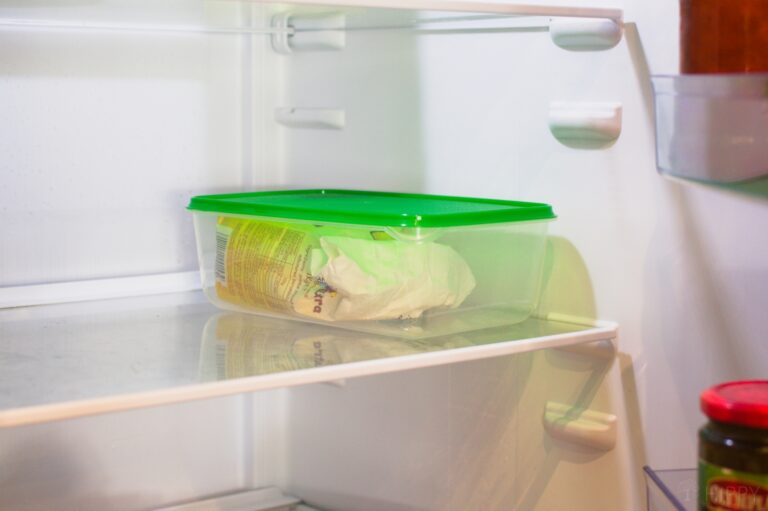
Store in an Airtight Container
One of the best ways to keep your cornmeal fresh is to store it in an airtight container like a glass jar or even canning jars. A five-gallon bucket with a lid will also work. This will protect it from moisture and pests, both of which can cause mold or other damage.
Be sure to label the container with the date of purchase so you know how long it’s been stored.
Use an Oxygen Absorber or Vacuum Bag
You can also keep your cornmeal fresh for up to 10 years if you use an oxygen absorber or vacuum bag.
Check for Pests Before Use
Before using any stored cornmeal, always check for signs of pests. Even if you can’t see any bugs, they could be present in small numbers and difficult to spot. To be on the safe side, sift the cornmeal through a fine-mesh strainer before using it in any recipes.
Which Type of Cornmeal Lasts Longest?
Again, the type of cornmeal you’re trying to store will play the biggest role in how long it lasts. Let’s take a closer look at the different types of cornmeal and their shelf lives.
Bolted vs. Unbolted Cornmeal
When buying cornmeal, you will see on the packaging whether it is bolted or unbolted.
Bolted cornmeal (germinated cornmeal) is ground and then put through a sieve to remove the pieces of hull and germ that contain the oils in the cornmeal. Bolted cornmeal lasts longer than unbolted cornmeal because it has less oil to spoil.
Unbolted cornmeal (degerminated cornmeal) contains hull and germ. The oil content is high, and the cornmeal is, therefore, more prone to spoil if not properly stored.
However, the oil in unbolted cornmeal makes the cornmeal more nutritious. If purchased in smaller quantities that will be used quickly, unbolted will be better tasting and healthier.
Grind Fineness
The fineness of the grind affects the purpose of the corn and its lifespan. The finer the grind the more susceptible the product is to spoil.
Whole corn kernels have a significantly longer shelf life than cornmeal. This is because as the corn is ground the length of the process of grinding exposes the length of time the corn is exposed to oxygen. The finer the grind the more likely it is to spoil.
Best Way to Store Cornmeal for Long-Term Food Storage
When it comes to storing cornmeal, you have three main options: the freezer, airtight containers in the pantry, or containers with oxygen absorbers.
Each option has its own set of pros and cons that you’ll need to weigh before making a decision. Here’s a quick overview:
Freezer
The freezer is great for long-term storage of cornmeal since it will keep it fresh for up to a year. However, you’ll need to make sure that the cornmeal is well-sealed so that ice crystals don’t form and affect the quality of the meal.
Another downside of storing cornmeal in the freezer is that it can be challenging to scoop out small amounts as needed since it will likely clump together.
Airtight Containers in the Pantry
Airtight containers are ideal for short-term storage of cornmeal since they’ll keep it fresh for up to 6 months. But similar to the freezer method, scooping out small amounts can be difficult since the meal will likely clump together.
You’ll also need to make sure that your containers are truly airtight so that moisture doesn’t get in and spoil the cornmeal.
In the Fridge
If you regularly use cornmeal, keeping it in the fridge can be pretty handy. Since you’ll be using it fairly quickly, you can keep it in the original packaging, which you can then place in an airtight container.
Refrigerators are fairly dry, but condensation will form, hence the need for an airtight container. The original packaging is simply kept to avoid the light reaching it every time you open the fridge door…
Containers With Oxygen Absorbers
This is our recommended method for storing cornmeal since it will keep it fresher for longer and makes scooping out small amounts easy. Simply place oxygen absorbers** inside an airtight container before sealing it shut.
The oxygen absorbers will remove all of the oxygen from inside the container, increasing its shelf life. I recommend checking on your oxygen absorbers every few months to make sure they’re still working properly.
How Long Does Each Method Keep Your Cornmeal Fresh?
Like flour and other dry goods and whole grains, cornmeal needs to be kept in a cool, dry location.
That said, the shelf life of your cornmeal, regardless of whether it is degerminated cornmeal, bolted, unbolted, or anything else, can be mostly predicted by the storage method you choose for your cornmeal.
- If stored in an open packet in a cool, dry pantry, your cornmeal can last 12 months.
- If stored in an airtight, moisture-tight, dark container in a cool, dry pantry, your cornmeal will last 1 – 2 years
- If stored in a cool, dry, dark pantry using oxygen absorbers, your cornmeal can last 5 – 10+ years.
- If stored in a fridge in an airtight, moisture-tight, dark container, your cornmeal will last 18 to 24 months.
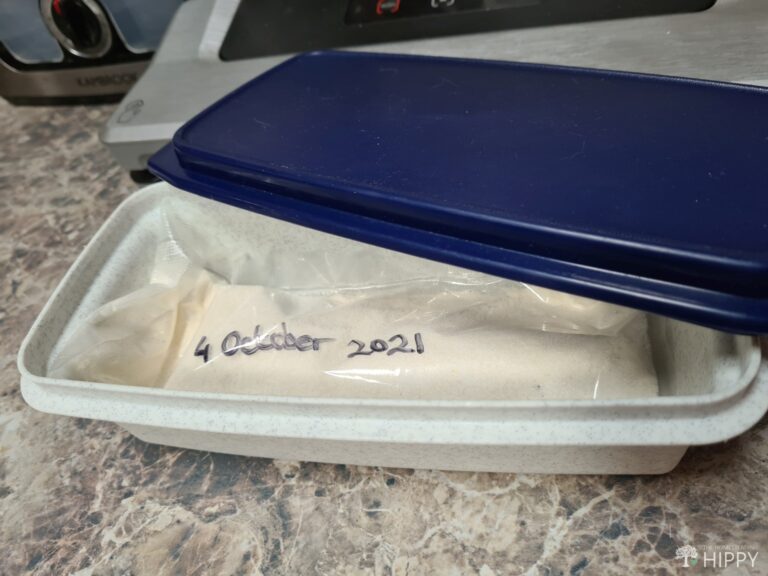
If frozen in an airtight, moisture-tight, container, zip lock bag, or vacuum-sealed bag, your cornmeal will last 3 to 5 years. If the temperature remains at a steady 0 degrees Fahrenheit, it will last 10 years or more.
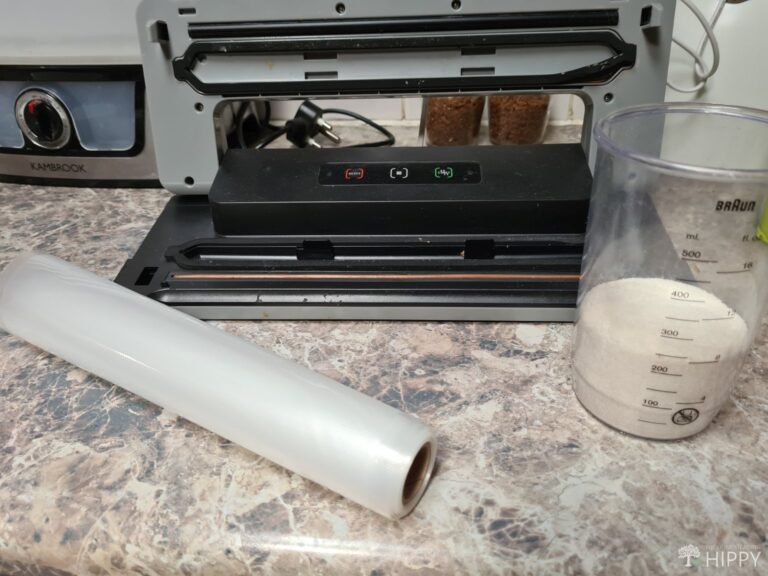
Risk of Using Cornmeal and Oxygen Absorbers
Cornmeal contains oil. The one bacterium that does not need oxygen to thrive is botulism. All botulism needs to grow is moisture.
Oxygen absorbers are effective to use on dry foods but not on wet foods. Because of the oil in cornmeal, it is classified as wet food.
To protect your cornmeal from botulism, keep it unopened until the next low humidity day and package it then.
You could also leave it in an oven that is set at its lowest temperature until the cornmeal is properly dry. Let it cool down at room temperature (in a dark environment) and package it when it is cool.
I find leaving it in the oven when the oven is turned off is very effective for the cooling process as the environment is dark, but leave the door open a crack when the oven is on and when it is cooling to prevent moisture from building up.
Do not store your cornmeal near the dishwasher, microwave, fridge, kettle, or other items that produce heat and condensation.
Is it OK To Use Expired Cornmeal?
We’ve all been there. You’re rummaging through your pantry, looking for something to make for dinner, when you come across a half-used bag of cornmeal that’s been sitting there for who knows how long.
The expiration date is long past, but it looks fine. After all, it’s just cornmeal. So you go ahead and use it…but is that really a good idea?
Technically, it’s safe, but not a great idea.
Dry goods like cornmeal have a much longer shelf life than perishable items because they are not as susceptible to bacteria growth. However, that doesn’t mean that you can ignore the expiration date altogether.
While expired cornmeal probably won’t make you sick, it will almost certainly not taste as good as fresh cornmeal. The flavor will be more muted and the texture may be slightly off. Additionally, using expired cornmeal may affect the overall quality of your dish.
And last but not least, expired cornmeal may be at an increased likelihood of going rancid. You’ll know it’s gone rancid if it has a sour or musty smell (this is caused by the fact that cornmeal has more moisture in it than other types of dry goods).
Conclusion
Air (oxygen) and moisture are cornmeal’s worst enemies. Make sure your container is airtight, if you are using a zip lock bag, close the zip part way, leaving only a small hole, and then squeeze all the air out before completely sealing the bag.
The absolute best way to store cornmeal is to vacuum seal small portions and freeze them, taking out only what you need for your recipe.
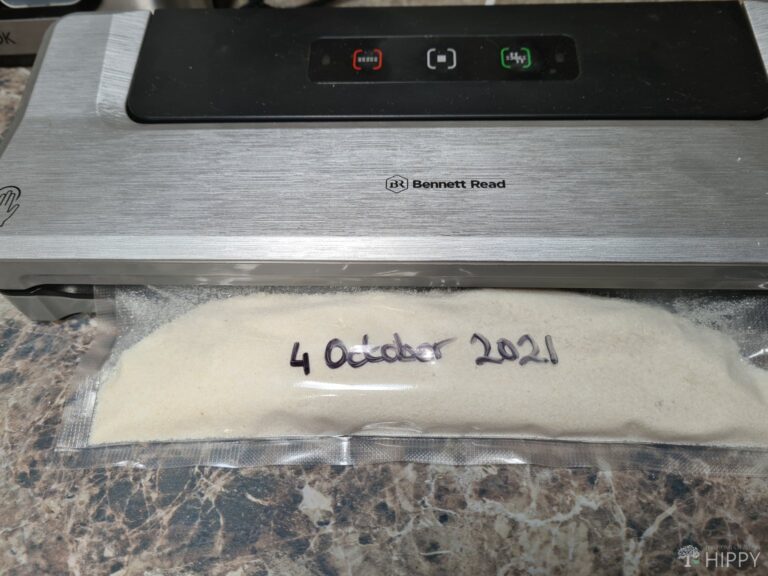
When purchasing cornmeal, you should check three things on the packaging:
- Check the best before date, purchase cornmeal that is not close to the best before date.
- Check if it is bolted or unbolted, bolted lasts longer but unbolted is more nutritious.
- Check the fat content, the lower the fat content, the longer your cornmeal will last.
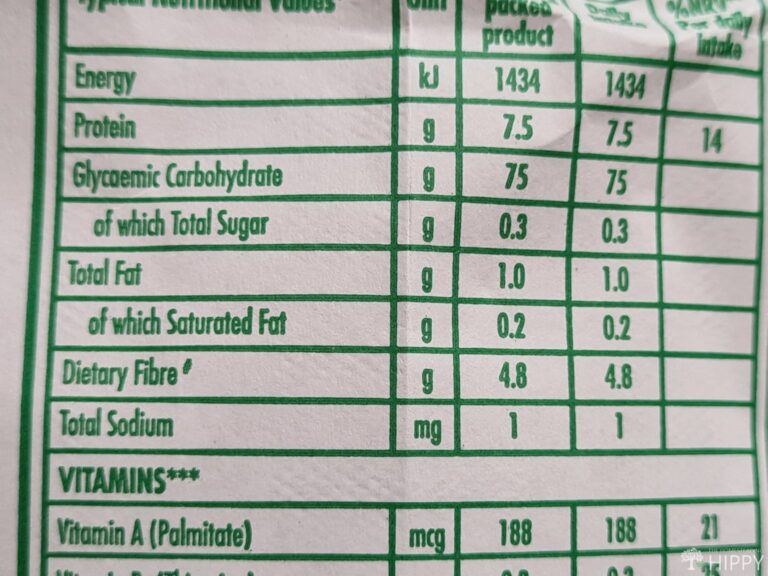
Questions You May Have
If you buy cornmeal in bulk, you may be wondering how long it will last before it goes bad. When stored in an airtight container, such as a Mylar bag, cornmeal can last for up to 18 months. That said, it’s important to keep the cornmeal dry, as moisture can cause mold to grow.
Unlike other types of flour, cornmeal can go rancid if it is not stored properly. Rancid cornmeal will have a musty or sour smell, and the flavor will be bitter or unpleasant.
If the cornmeal is stored in a cool, dry place, it should remain fresh for up to six months after the expiration date. If it has been stored in a humid environment, it may only last for three to four months.
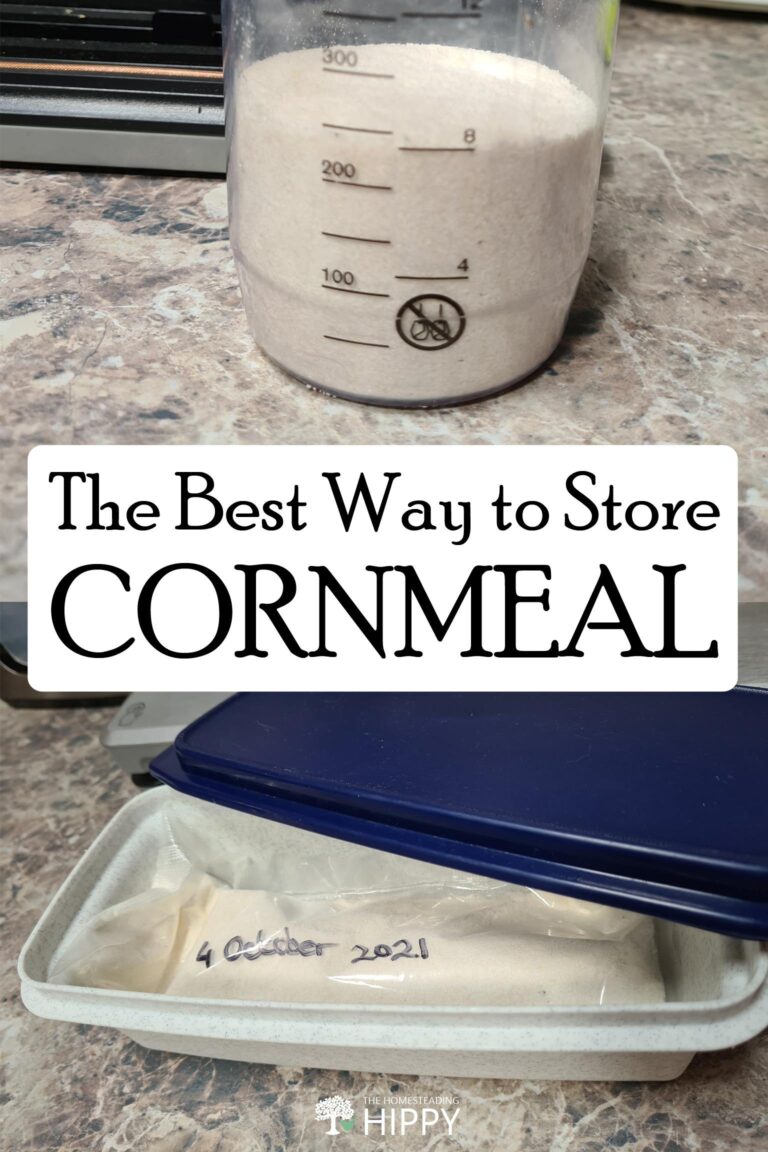

Di-Anne Devenish Seebregts was raised in an environment where daily life consisted of hiking, environmental conservation, growing fruit and vegetables, and raising poultry for meat and eggs.
She combined her passion for the writing word with her love of the pride that comes with not relying on others. She raised three children (who are now adults) to value the environment, and understand the value of being self-sufficient.
Find out more about Di-Anne on our About Us page.
